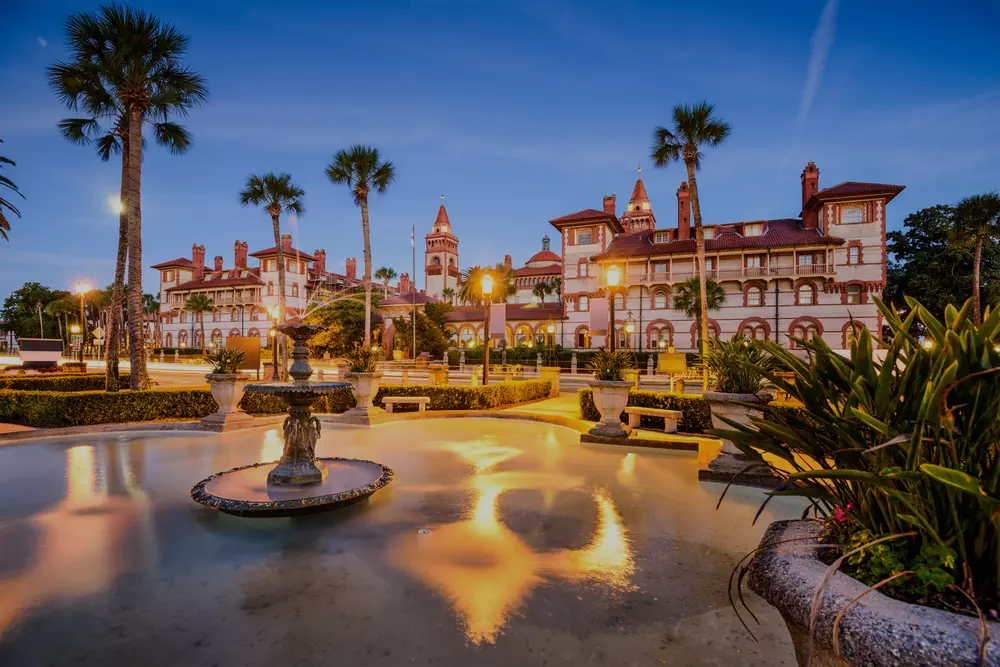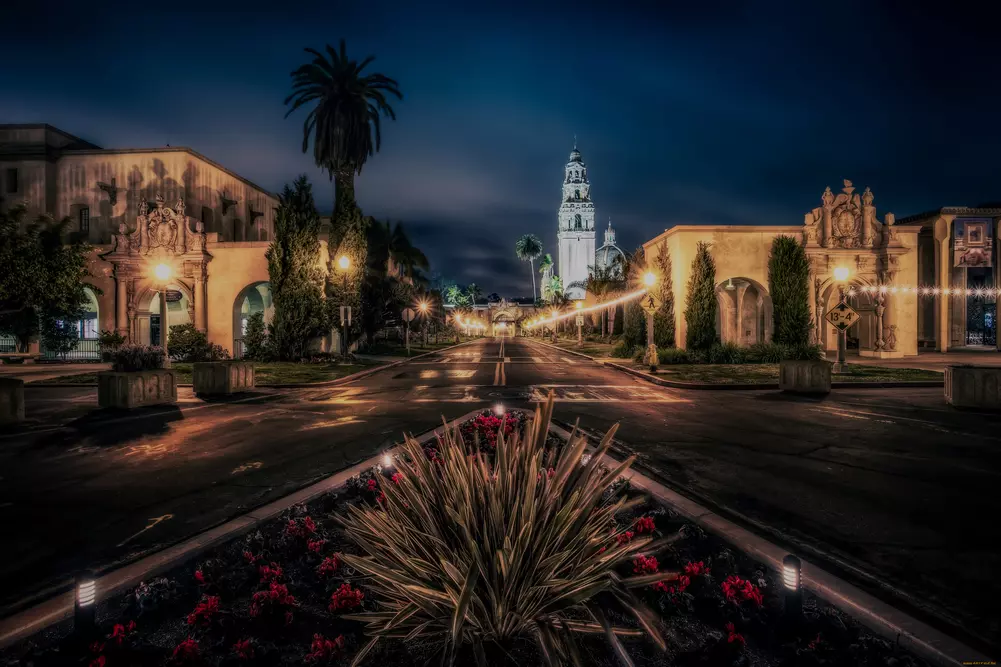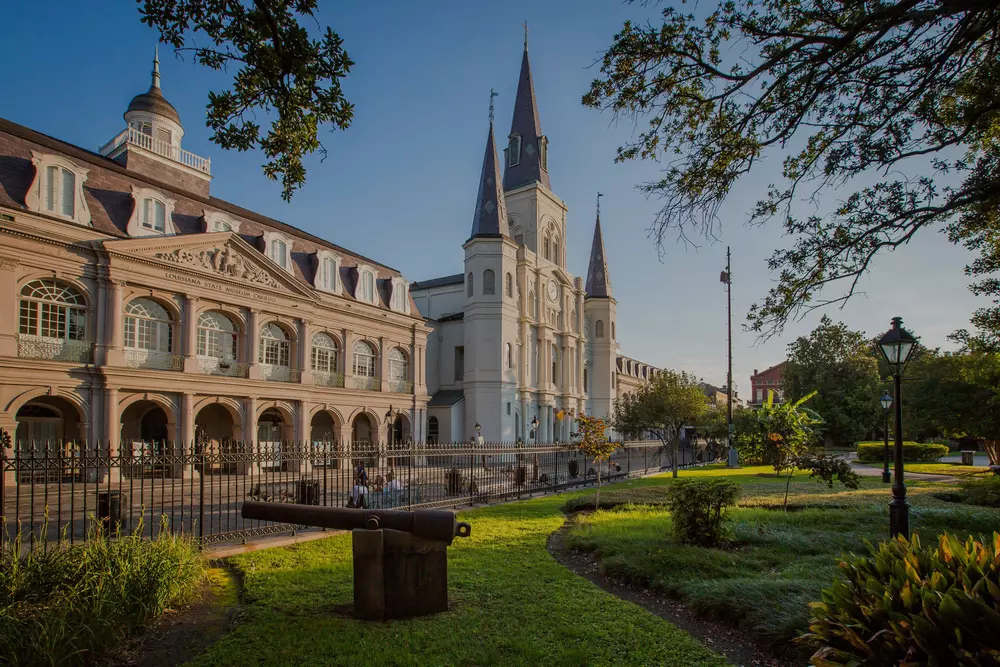Baton Rouge, the capital of Louisiana, is a city with a rich history and a remarkable legacy. From its initial designation as "red stick" by French explorers to its contemporary status as one of the state's largest cities, Baton Rouge has undergone a long and captivating evolution.
Baton Rouge is the second-largest city in Louisiana, trailing only behind New Orleans. It spans an area of 204 square kilometers and is home to 250,000 residents. When you include the suburbs, the population quadruples. In this article, we will delve into the characteristics, historical facts, and pivotal events that have shaped the city into what it is today.
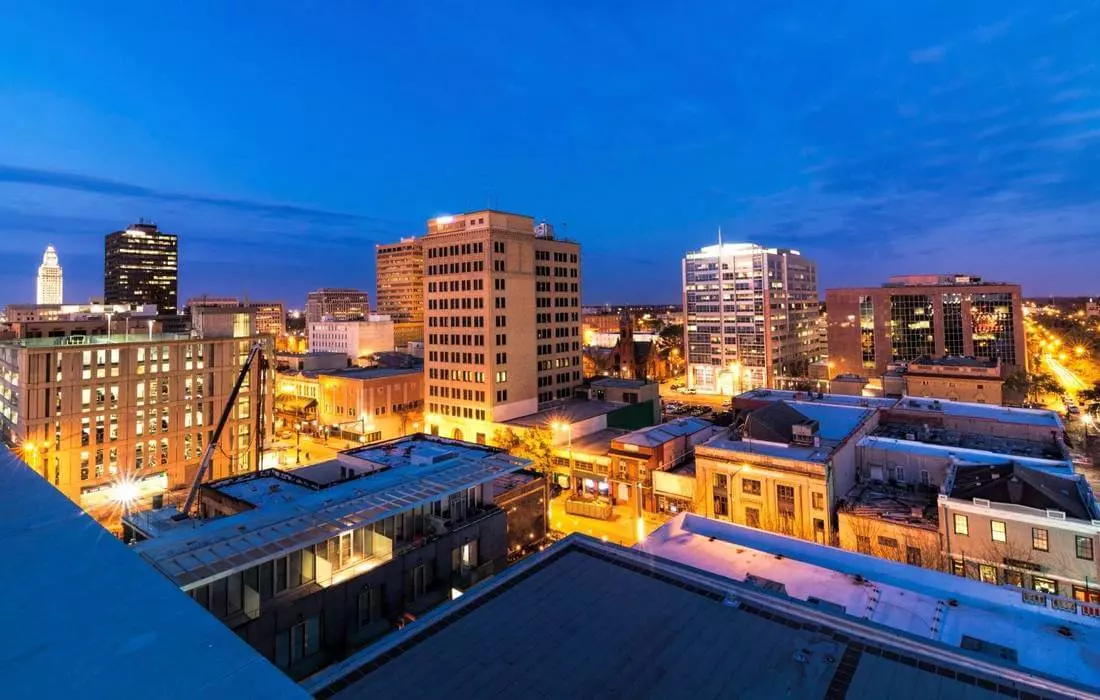
Features of the city
- The mighty Mississippi River flows through Baton Rouge. The city's foundation at a strategically advantageous military location led to the active construction of levees, which serve to protect the urban landscape from flooding.
- Baton Rouge is graced with a subtropical climate, featuring warm, humid summers and brief winters. Snow is a rarity here, but strong winds are common; come fall, the city is no stranger to hurricanes.
- The demographic composition of Baton Rouge is predominantly African American, constituting 55% of the population. Regrettably, Baton Rouge shares some common urban challenges with a typical Russian city, including poor road conditions, traffic congestion, and issues with public transportation.
- Sports receive a significant share of the city's attention. In 1860, Louisiana State University was established here, and it's renowned for its football team, the LSU Tigers.
- Local team symbols are ubiquitous, from souvenirs to café decorations. During their games, the stadium can pack in up to 100,000 spectators.
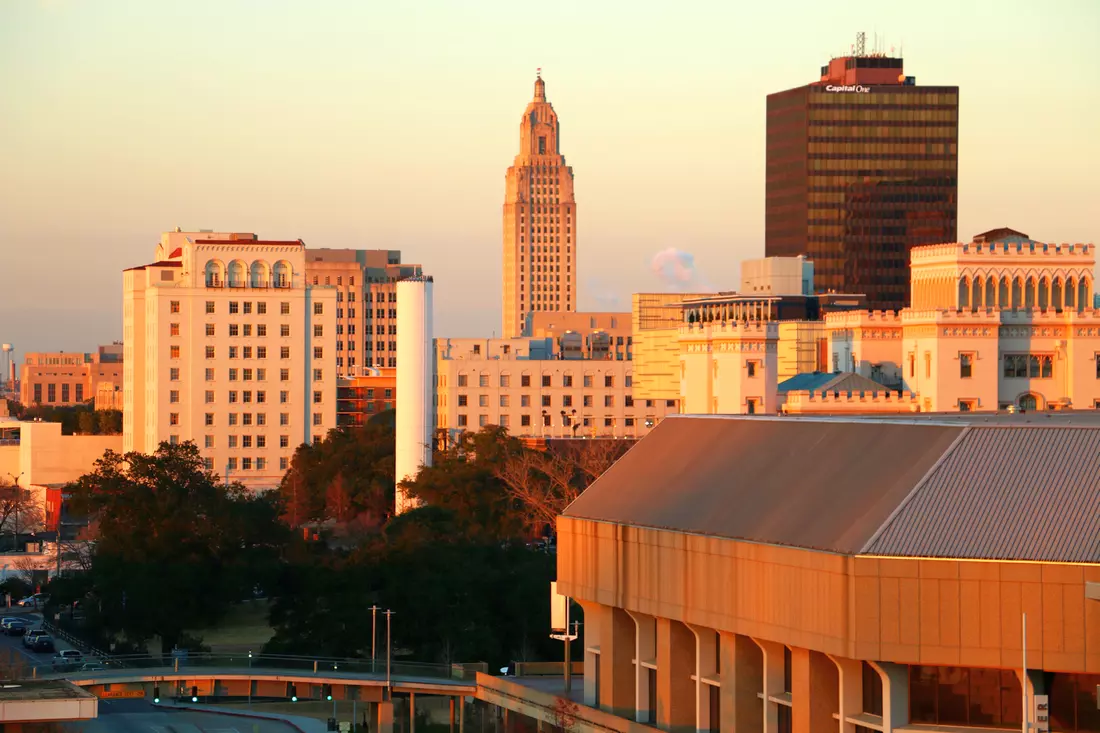
Oil production has been developing since the middle of the 20th century. Now Louisiana creates a quarter of all US plastic. Sixty of the state’s 100 plants are located in Baton Rouge.
History of foundation and development
Baton Rouge's history reaches deep into the past, back to the year 1699. It was then that the explorer Pierre Le Moyne d'Iberville, leading an expedition, navigated the waters of the Mississippi River. During his journey, he took notice of a cypress tree adorned with peculiar blood stains and animal pelts. This tree served as a distinctive marker delineating the lands of the indigenous people. The French colonizers, recognizing its significance, named the place "red stick," which eventually became the modern name — Baton Rouge.
Two decades later, the same location saw the arrival of the first French settlers, who established a military post there. Over the centuries, Baton Rouge changed hands several times, briefly coming under British control, then Spanish, and during the Civil War, it was held by the Confederacy. With the conclusion of the war and the victory of the Union forces, the city joined the United States of America. By 1849, Baton Rouge had become the capital of Louisiana.
In 1928, Governor Huey Long directed the construction of a new Capitol building to replace the old one. The construction was completed in 1932, and just three years later, Long was assassinated on that very site. The Capitol building's construction cost five million dollars. To this day, bullet marks can still be seen on the walls of the building, a somber reminder of the governor's tragic fate.
During the Civil War, Baton Rouge had a population of about 5,500 people, but after the war, the city began to develop rapidly. Today, it is home to approximately 250,000 citizens. This growth was further impacted by Hurricane Katrina, when many New Orleans residents relocated to Baton Rouge in search of safety and new opportunities.
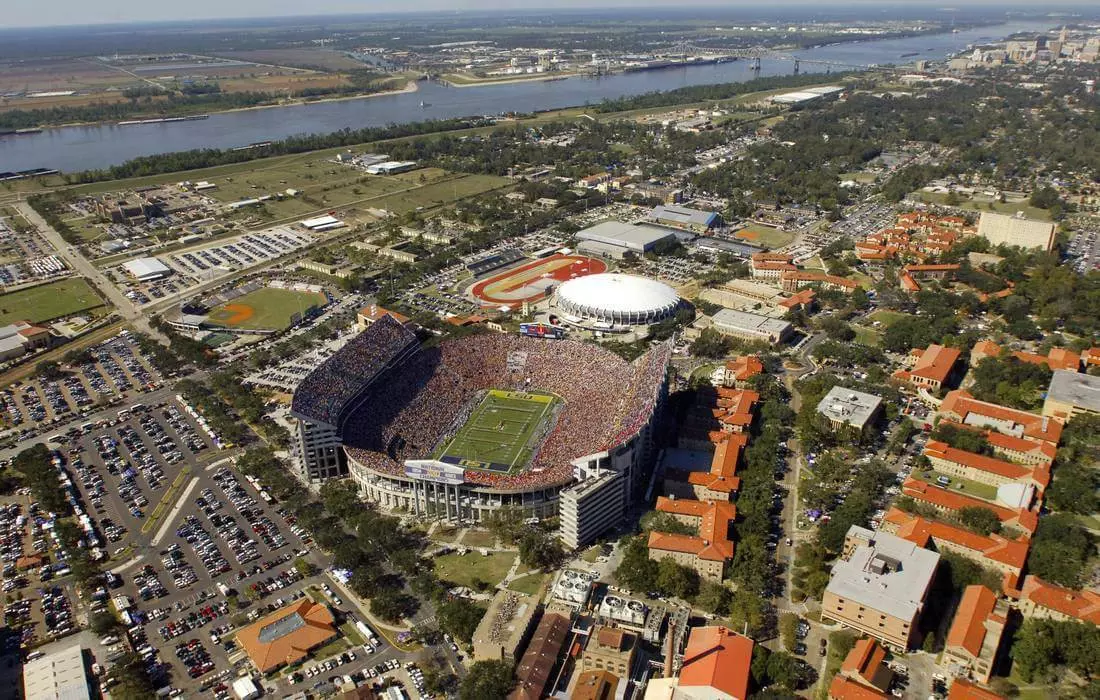
Attractions in Baton Rouge
- Louisiana State Capitol
This 34-story building is a bastion for state officials. It was the tallest capitol at the time of its construction and has been designated as a historical landmark. Don't confuse it with the Old State Capitol, which now houses a museum of political history. Surrounding the Capitol is an expansive park adorned with flowers and ancient oaks. There you'll find a 4-meter statue of Governor Huey Long, who commissioned the building's construction. - Shaw Center for the Arts
The premier entertainment hub of the city. It includes art galleries, a science center, and lecture venues. There's also an art museum here, which boasts the country's largest collection of ceramics. - USS Kidd Museum
The destroyer "Kidd" is a vessel that participated in the naval battles of World War II. Its symbol is the pirate William Kidd, although in fact, the ship was named after Admiral Isaac Kidd, who perished at Pearl Harbor. Since 1945, the "Kidd" has remained unchanged, only undergoing occasional restorations. It is now open for public exploration. A tour will take about 2 hours. - LSU Rural Life Museum
This museum encapsulates the entire agricultural heritage of the state. On the plantation, there's a barn filled with 19th-century farming tools, furniture, and household items. Nearby is the overseer's house, servants' quarters, a school, and a kitchen. Close by are buildings reflecting the architecture of the early settlers: a church, a hunter's cabin, a mill, and a blacksmith shop.
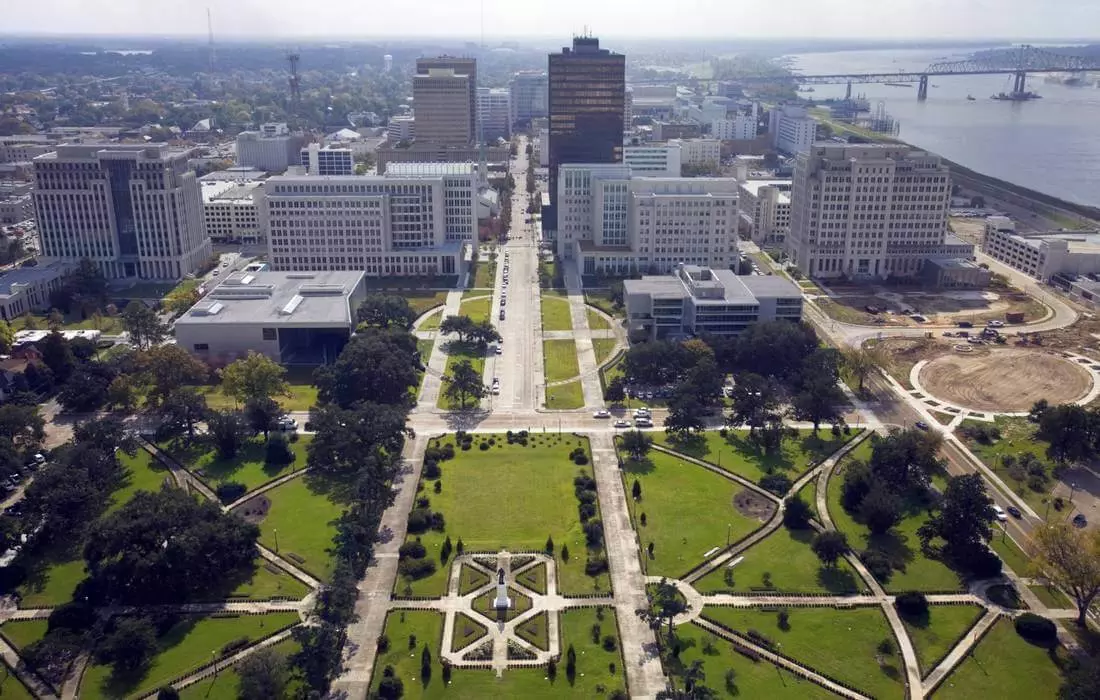
Baton Rouge stands as a living testament to numerous historical events and turning points. Its roads, buildings, and monuments echo a tumultuous past and pivotal moments in the history of Louisiana and the United States. At the same time, the city steadily marches towards the future, preserving its traditions and cultural legacy. This unique blend of history and modernity makes Baton Rouge an appealing destination for exploration and immersion into the ambiance of Southern hospitality and beauty.
As you may recall, the situation with public transportation in the city leaves much to be desired. Walking can be time-consuming, and relying on taxis can be expensive. That's where tours from American Butler come in handy — they make discovering the sights of Baton Rouge a breeze!






















